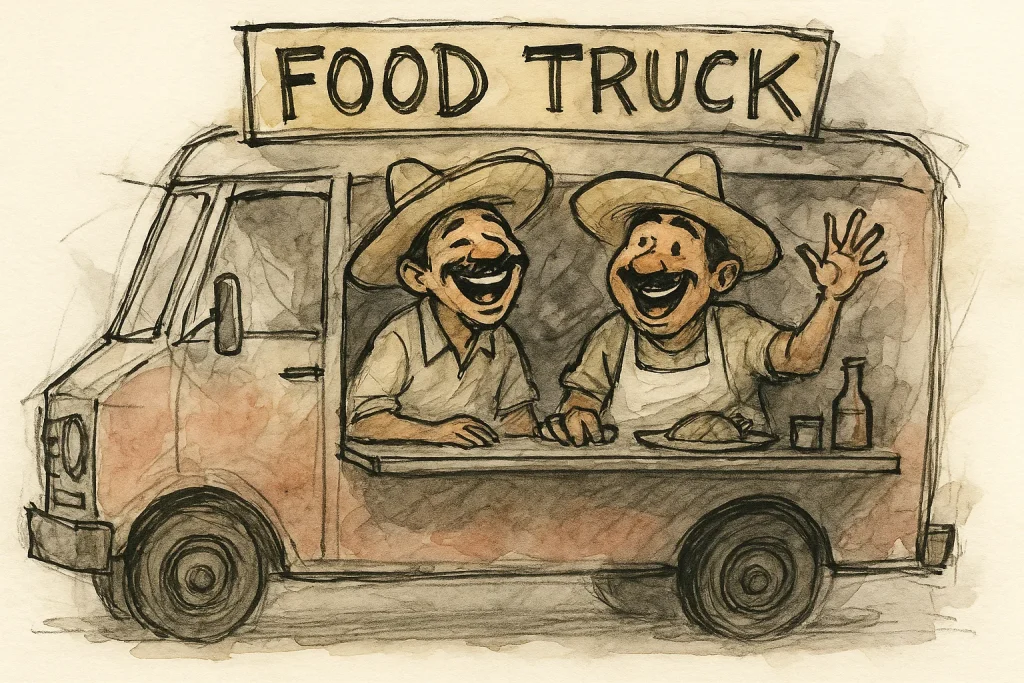
The food truck market has grown rapidly, combining gastronomy, mobility, and customer experience. While many still see this segment as just “street food,” the reality is that a well-structured food truck can generate consistent revenue, build loyal customers, and allow for rapid expansion.
Market Overview
The food truck market combines food, mobility, and entertainment, creating a unique culinary experience. Key factors supporting growth:
- Differentiated experience: Customers seek not just food, but a unique and convenient experience.
- Events and festivals: Food trucks are a staple at cultural events, concerts, fairs, and corporate parties.
- Trend toward high-quality gastronomy: Gourmet food on the move attracts a diverse audience and increases average ticket value.
- Operational flexibility: Food trucks can operate in various locations, adjusting menus and prices according to demand.
The market allows operations in multiple niches: themed cuisine, artisanal snacks, sweets and desserts, healthy quick meals, among others. Mobility is a competitive advantage, increasing customer acquisition and enabling testing of new sales points without high fixed costs.
How the Business Works Step by Step
- Define Concept and Menu
- Choose food style, specialization, and value proposition: artisanal snacks, ethnic cuisine, healthy options, or gourmet.
- Acquire the Food Truck
- Buy or lease a vehicle equipped with a kitchen, meeting hygiene and safety standards.
- Licensing and Regulations
- Obtain operating permits, health inspections, and insurance to ensure legal and safe operations.
- Operational Planning
- Define suppliers, inventory, logistics, schedules, and strategic selling locations.
- Marketing and Positioning
- Online presence via social media, event websites, and delivery platforms.
- Visual branding of the truck, uniforms, and attractive menus to boost recognition and engagement.
- Service Execution
- Prepare high-quality food, provide fast and courteous service, and maintain hygiene and presentation standards.
- Financial Management and Growth
- Track costs, profit per unit, operating margin, and ROI.
- Expand to events, corporate catering, delivery, or franchises based on demand.
Why Invest in This Business?
- Low fixed costs: Unlike traditional restaurants, food trucks reduce expenses on rent and infrastructure.
- High flexibility: Operate in various locations and events, increasing visibility and revenue.
- Rapid growth potential: Events and festivals provide high client turnover and increased average ticket.
- Revenue diversification: On-site sales, delivery, corporate events, and catering.
- Value of experience: Customers pay more for convenience and unique culinary experiences.
Business Analysis Table
| Criterion | Rating (1 to 5) | Comments |
|---|---|---|
| Customers perceived value | 5 | Customers value quality food, experience, and convenience. |
| Required Knowledge level | 3 | Requires knowledge in gastronomy, kitchen operation, and business management. |
| Initial Investment level | 3 | Moderate cost for acquiring or adapting a food truck and equipment. |
| Potential profitability | 4 | Attractive margins, especially in events and catering. |
| Growth potential | 5 | Expansion possible via delivery, multiple trucks, and franchises. |
| Customer acquisition cost | 3 | Digital marketing, social media, and event presence aid acquisition. |
| Risk and challenges level | 3 | Dependence on seasonal demand, weather, and strategic location. |
| Estimated Time to payback | 6-12 months | Fast return possible in high-traffic areas or regular events. |
Business Model
- Value Proposition: High-quality, convenient, and personalized food with a unique food truck experience.
- Customer Segments: Urban audience, event attendees, workers in commercial areas, companies, and private parties.
- Channels: Mobile food truck, social media, delivery platforms, participation in events and fairs.
- Customer Relationships: Fast service, loyalty programs, special promotions, and social media communication.
- Revenue Streams: Direct sales, catering, delivery, festival participation, corporate packages.
- Key Resources: Equipped food truck, trained staff, quality suppliers, digital marketing.
- Key Activities: Food preparation, truck operation, marketing, financial management, and inventory logistics.
- Key Partnerships: Food suppliers, event organizers, delivery companies, sponsors.
- Cost Structure: Truck acquisition or lease, equipment, raw materials, marketing, staff, and maintenance.
Market Entry Strategies
- Select a clear niche: Specialize in themed or gourmet cuisine to stand out.
- Participate in events and festivals: Increases visibility and revenue.
- Strategic digital marketing: Social media, food blogs, delivery platforms.
- Local partnerships: Companies, universities, and high-traffic locations increase demand.
- Loyalty programs: Frequent customer cards, promotions, and special packages.
Practical Tips and Tools
- Management apps: Inventory, sales, and logistics tracking.
- Social media platforms: Instagram, Facebook, TikTok to engage clients and share locations.
- Delivery software: iFood, Uber Eats, or proprietary apps to expand reach.
- Efficient equipment: Compact stoves, freezers, multifunctional utensils.
- Hygiene and safety: Daily checklists, training, and compliance with health regulations.
Conclusion
The food truck market is a classic example of an underestimated yet highly profitable business. It combines mobility, gastronomy, and customer experience, allowing rapid growth and diversified revenue streams. With strategic planning, proper marketing, and a focus on quality, this sector offers real opportunities for visionary entrepreneurs who know how to find gold in the ordinary.
Call-to-Action
Want to turn your passion for gastronomy into a profitable business? Invest in a food truck, develop a differentiated menu, choose strategic locations, and attract clients who value quality, convenience, and experience. Start now and take advantage of the continuous growth of the food truck market!






